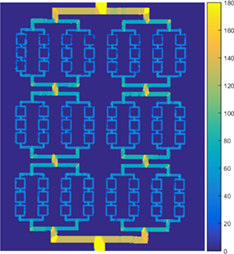Automated vessel diameter quantification and vessel tracing for OCT angiography
Funding information: National Heart, Lung, and Blood Institute, Grant/Award Number: R01HL141570; Research to Prevent Blindness; Washington Research Foundation; WRF David and Nancy Auth Innovation Award
Abstract
Optical coherence tomography angiography (OCTA) is capable of non-invasively imaging the vascular networks within circulatory tissue beds in vivo. Following improvements in OCTA image quality, it is now possible to extract vascular parameters from imaging data to potentially facilitate the diagnosis and treatment of human disease. In this paper, we present a method for automated mapping of vessel diameter down to the individual capillary level, through gradient-guided minimum radial distance (MRD). During validation using well-characterized microfluidic flow phantoms, this method demonstrated superior consistency and a nearly threefold decrease in error when compared to currently accepted techniques. In addition, the MRD technique exhibited a high tolerance to rotation of the vasculature pattern. We also incorporated a modified A* path searching algorithm to trace vessel branches and calculate the diameter of each branch from the OCTA images. After validation in vitro, we applied these algorithms to the in vivo setting through analysis of mouse cortical vasculature. Our algorithm returned results that followed Murray's law, until reaching the capillary level, agreeing well with known physiological data. From our tracing process, vessel tortuosity and branching angle could also be measured. Our techniques provide a platform for the automated evaluation of the vasculature and may aid in diagnosis of vascular diseases, especially those resulting in regional early-stage morphological changes.
Open Research
DATA AVAILABILITY STATEMENT
The data that support the findings of this study are available from the corresponding author upon reasonable request.




